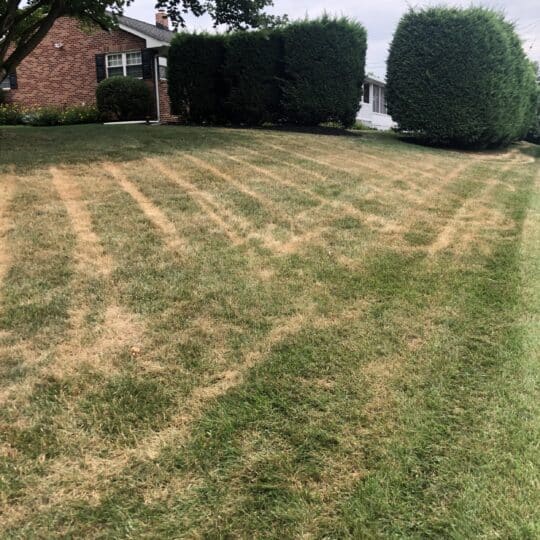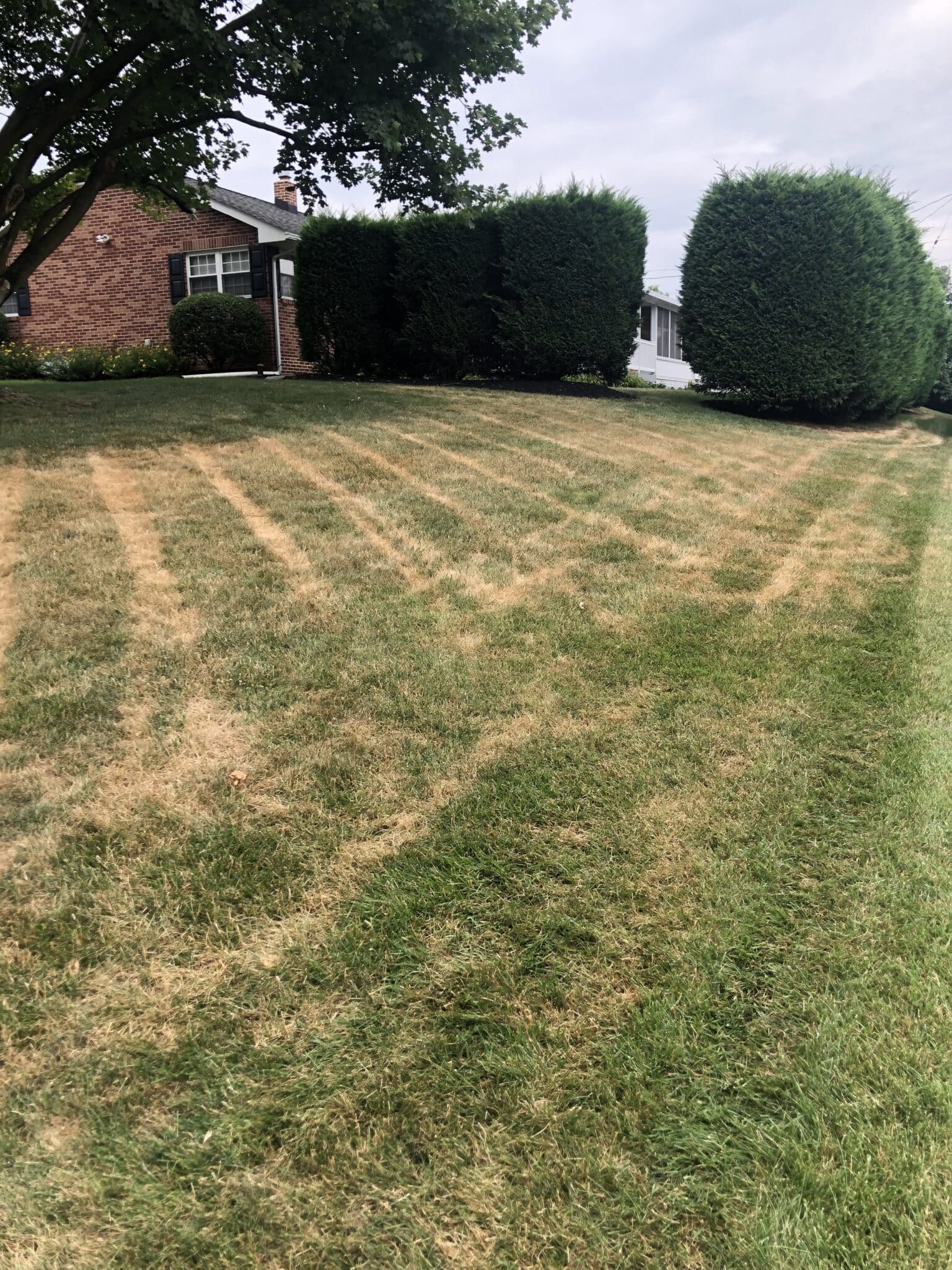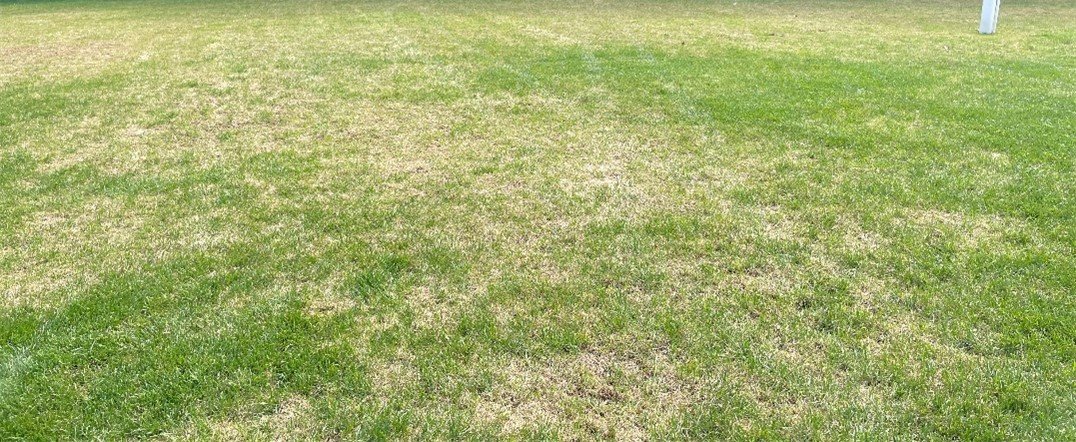Summer is Approaching… Summer Turf Tips!

Kiddos are out of school, and the unofficial start to summer has begun!! Typically, the first week of June, we are gearing up for conditions that can cause stress to your turf setting and plant material as we approach the month of July. Unfortunately, we find ourselves in a unique situation in 2023, with a lack of rain fall in May, breaking a record back to 1902. It is important that we circle back what is happening to the turf and what we can do as a client relationship concerning cultural practices that you the homeowner can administrated to enhance the health of your turf ecosystem during these times.
What is Dormancy?
People often wonder what is going on when moisture levels dip in the soil. Good news, the grass is well prepared for such environmental conditions and will go into a state of dormancy to protect itself from further moisture loss. Dormancy is the turf protecting itself from heat and drought stress through natural physiological processes. This state is characterized by a complete cessation of growth along with brown or dead grass blades.” (Dennis Henkamp, Extension Publicist Specialist, Is my Lawn Dormant or Dead, Utah State University) By entering a state of dormancy, although the grass blades are brown, the crown and root system are still alive and when an adequate rain occurs, the grass will recover. Things to expect are the following:
- Brown grass
- Lack of growth
- Areas of shade or microclimates such as low-lying levels may exhibit more color longer due to less sun exposure and deeper moisture reserves.
- Seedhead production may occur in certain grass varieties. Seedhead production is a natural defense mechanism for the plant to produce additional offspring.
What Can I Do as a Homeowner?
As a homeowner, you can employ tactics that will reduce the stress exposure to the turf ecosystem during dormancy from mowing strategies and preventative fungicide inputs.

Tracking from mowing mid-Day in Heat
- For one, you can reduce your traffic on the turf, such as activities and mowing frequency. To most, that is welcoming news!
- Mow earlier in the day and avoid late afternoon.
- Raise your mowing heights during the summer months to 3.5 to 4 inches. The taller the leaf blade, the more energy it can capture during its photosynthesis processes. Also, the turf will exhibit a more resilient and deeper root mass with the correct mowing height.
- Maintain sharp blades. Dull blades shear the turf and increase injury during a cut thus making the grass more susceptible to disease and required energy to repair such damage. Role of thumb, sharpen in the spring and late summer. For you mowing enthusiast, additional sharping before the summer months is better.
- Have a preventative disease program to help protect the grass and recover faster when it exits dormancy. Once adequate rainfall occurs, the turf is in a weakened state and susceptible to disease. Diseases can be extremely aggressive during the summer with high moisture levels and humid conditions. We do have disease control programs, if you are interested. Please reach out to us for more information
Should I Water During Dormancy?
We DO NOT recommend it. We as turf managers from private golf course settings allow our personal home lawns to enter dormancy! Watering turf requires an elevated level of precision to balance the fine line of enhancing vs. other issues that watering causes. Also, without a professionally zoned system, watering on a home lawn will not achieve adequate rehydration and would supply uneven water levels. This would be considered a maintenance watering only rehydrating the crown or growing point, again causing more issues. A wise professor once told us in class, “Less is more.” Concerning watering a home lawn that is not in a professional golf setting, this could not be more spot on! Watering is both an art and science requiring a lot of time, effort, and attention better left to Mother Nature.
Enjoy the summer months, outside activities, and holidays we get to celebrate.
Green Image Lawn Care Team
